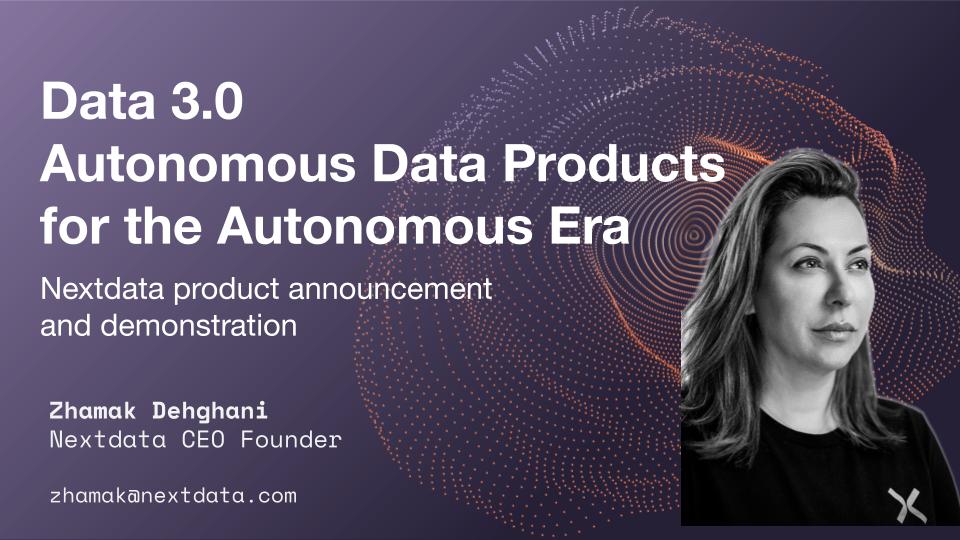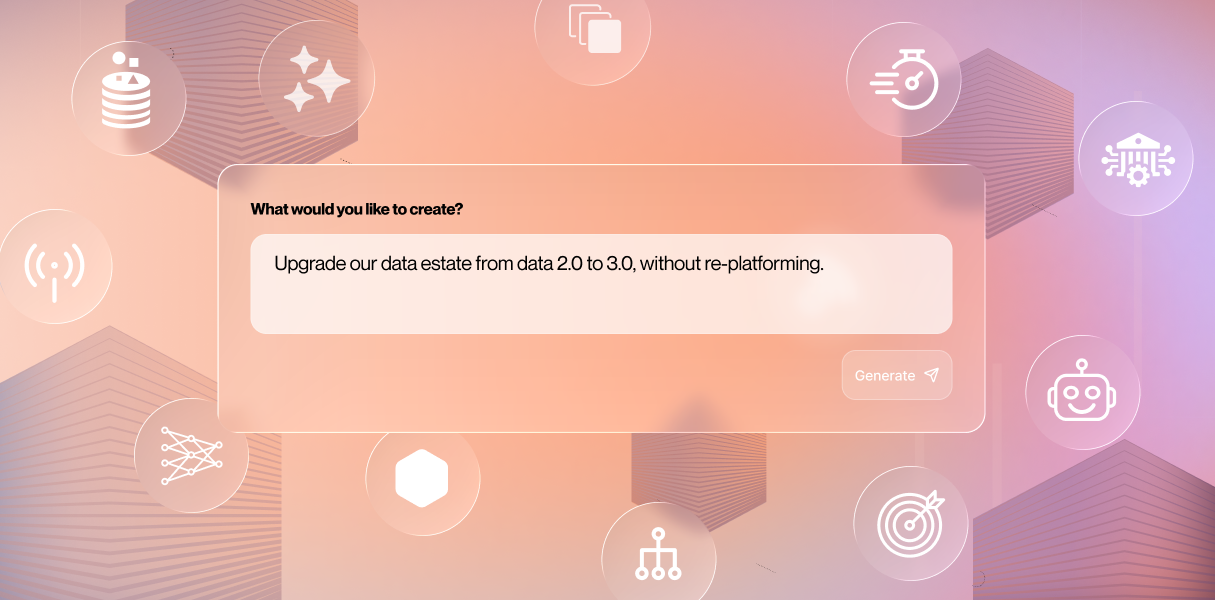Data Products
A gentle correction — here’s what makes Nextdata OS data products autonomous
Since the launch of Nextdata OS, we’ve seen incredible engagement and thoughtful analysis from the community. But I want to address a recurring misconception—one that glosses over the fundamental shift in architecture we've introduced.
Yes, Nextdata data products are self-contained, but that’s table stakes. What differentiates them is that they are autonomous—and that word has specific, technical meaning in our design.
Definition (Oxford dictionary):
”Having the freedom to govern itself or control its own affairs. Acting independently or having the freedom to do so. Capable of operating without direct human control.”
Nextdata data products exhibit these very qualities.
They are defined in terms of a cohesive business domain semantic. They can range from coarse-grained domain concepts such as “supply chain”, “fulfillments”, “orders”, to fine-grained bounded context of “customer demographics”, “daily sales of a particular product through a single channel”.
Once defined, each data product autonomously executes all aspects of its data management for its domain.
They have a clear goal: produce, share and manage the lifecycle of their data in alignment with its semantic model. In essence, it is both the product and the factory of its domain’s data.
With this goal, it operates independently — controlling its own processes and decisions without relying on external direction or coordination.
This is not a templated provisioning pattern. It is not a catalog entry. It is not just metadata.
The Nextdata kernel gives each data product computational autonomy—a distinct shift from prior incarnations of data products that required external orchestration, policy enforcement, or infrastructure management.
While previous approaches may package data and logic, they still rely on centralized services to enforce policies or react to state changes.
Nextdata OS flips that model:
The data product is the core unit of execution, governance, and interaction.
This allows for:
- Federated execution across heterogeneous stacks and clouds
- Distributed governance, applied continuously and locally within each product
- Machine-interpretable semantics, available via API, usable by both people and agents
- Decentralized control, without sacrificing consistency or trust, and in fact enhancing them.
With that in mind, let’s explore how Nextdata’s autonomous data products function as well-run, intelligent data factories.

Each autonomous data product in Nextdata OS is a running service that produces, shares and manages four key constituents of a data product:
- Transformation code — generates the data.
- Multimodal data and metadata — serves a diverse set of use cases, from analytics to agents.
- Computational policies — govern all aspects of a data product’s behavior, including access, quality and compliance.
- Semantic model — defines the data’s intent, its domain model, its expectations from upstream suppliers and promises to downstream consumers and its relationships to other data products.
The source definition of a data product — including all its components — are managed together as code. At runtime, the Nextdata poly-compute kernel — a standalone, modular and composable engine — brings the definition to life.
This kernel is what makes autonomy possible. It encapsulates a deeply integrated set of capabilities, enabling each data product to operate independently based on its domain-centric goals.
Each data product’s kernel performs the following functions:
- Dynamically senses and orchestrates inputs at runtime, rather than relying on statically configured, externally managed pipelines.
- Executes transformation logic based on its input-trigger definitions, in collaboration with user-supplied code — not via externally defined pipelines and cron jobs.
- Enforces two-sided data contracts automatically based on its semantic model, as a core runtime function — not as a CI/CD step or review checkbox.
- Continuously validates policies at runtime, not relying on too-late alerts or after-the-fact audits.
- Exposes runtime APIs for data access, metadata, lineage, and management and can be made discoverable and addressable from anywhere on the internet.
- MCP (Multi-Agent Control Protocol) endpoints, enabling machine-consumable interaction for AI agents and orchestration frameworks
- Automatically provisions and configures its own data stack — storage, compute, security and quality (DCSQ) — based on its unique needs, without relying on externally defined automation templates.
Autonomous data products are designed for the autonomous era—for a world where humans, systems, and AI agents all need trusted, real-time access to governed data, at scale — without manual oversight and bottlenecks.
So if you're evaluating Nextdata OS as just a collection of “self-contained data products,” you're missing the core innovation.
This is a runtime shift. Not a wrapper. Not a catalog.
This is computational governance embedded within the product, not layered on top.
This is a new foundation for AI-ready, policy-compliant, self-operating data management.
Nextdata autonomous data products have:
- a beating heart, pumping and sharing data
- senses, detecting change in their environment, upstream data, infrastructure, or access
- a brain, thinking and reacting in real time
- and arms, acting on updates, enforcing policies, and adapting instantly.
Each lives independently, addressable across the network with a unique name and cooperating with other independent data products.
And this is just the start.
—Zhamak
Terminology to know:
What is multi-compute?
Multi-compute refers to the use of multiple, often separate, compute engines. For example, federated query technologies such as Trino or Dremio are multi-compute. They can run a single SQL dialect on multiple compute backends such as BigQuery, Redshift, Snowflake, etc. Nextdata autonomous data products are multi-compute since they drive the execution of user-supplied transformation code or data contracts on the user’s compute platform of choice such as Spark, Snowflake, and others.
What is poly-compute?
Poly-compute refers to a composable, modular architecture where different system components can simultaneously run on different compute engines while communicating in real time to function as a single logical unit. In Nextdata OS, the data product kernel has a poly-compute architecture. Nextdata kernel is composed of multiple modules — contracts, controls, transform orchestrator, and more. Based on the infrastructure profile (i.e., the user’s choice of storage, compute, quality technologies), these modules may run on different compute environments.
For example, user-supplied transformations and their associated input/output contracts may run on a streaming engine, while the kernel’s policy validation module and other core kernel modules execute as a Rust binary on Kubernetes.




.png)







